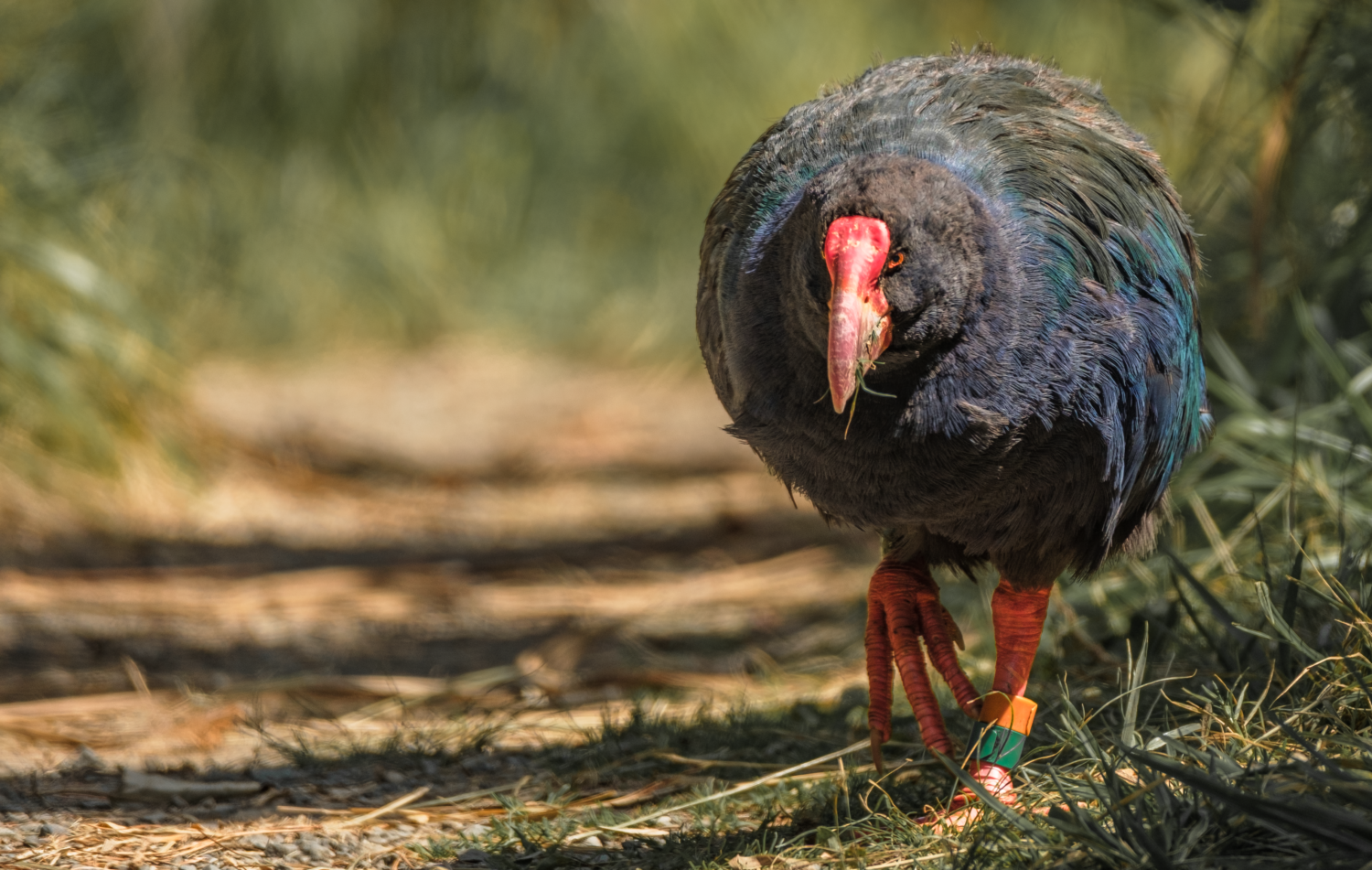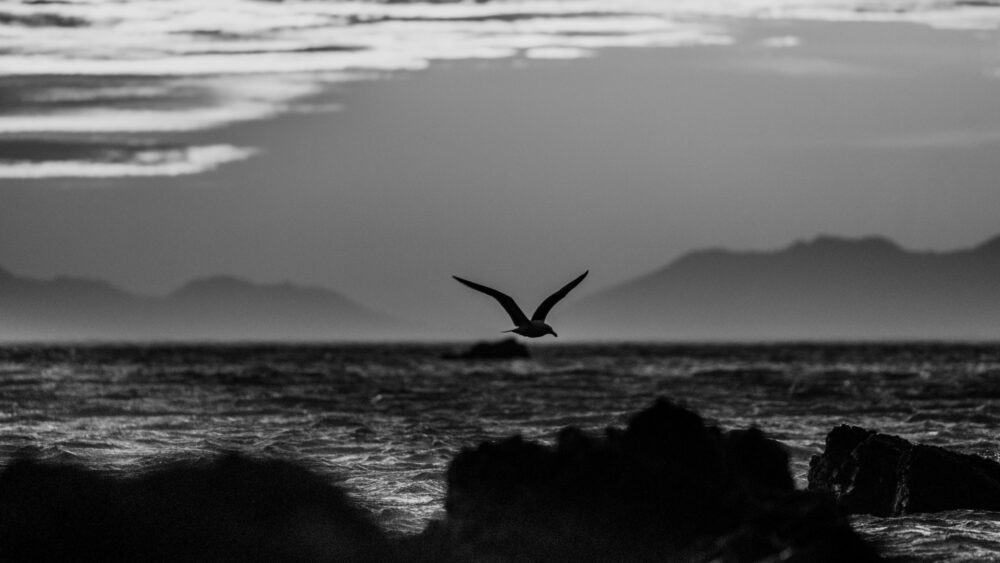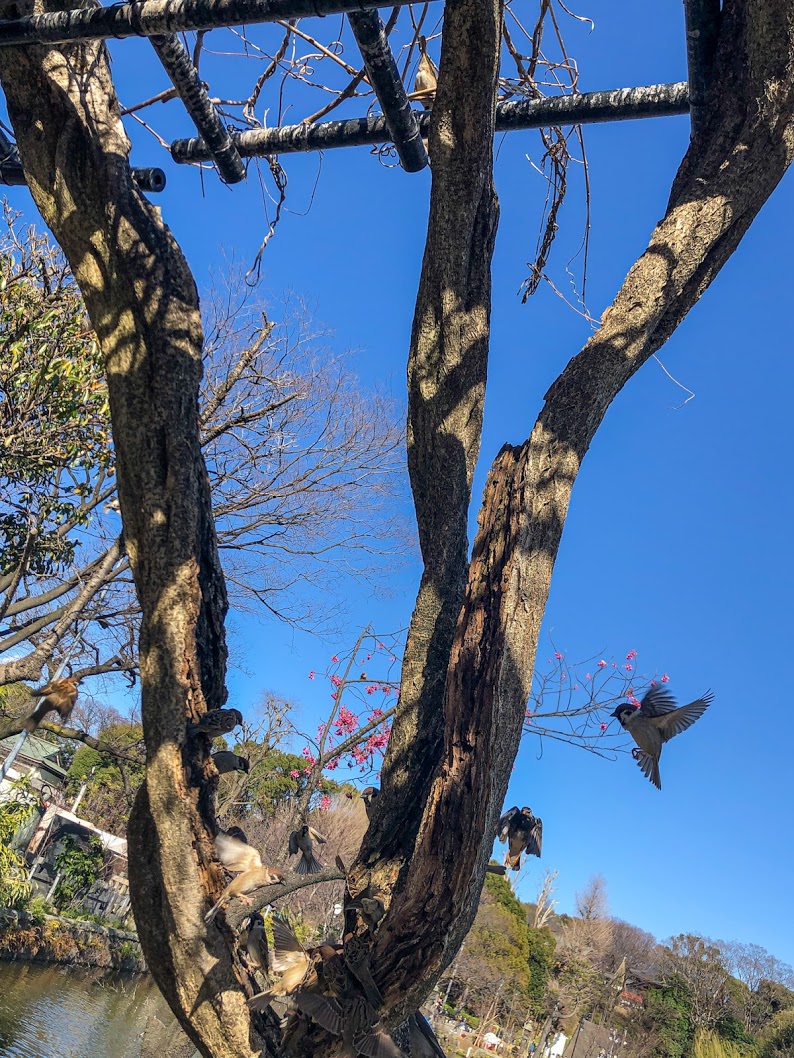Takahē the most gorgeous flightless and unique bird of my kingdom.
Foto: Lina Marin
Zealandia Ecosanctuary, New Zealand
English name: South Island takahē
Māori name: Takahē
Scientific name: Porphyrio hochstetteri
NZ Status: Endemic (only found in NZ)
Conservation Status (NZTCS): Nationally Vulnerable
Found: Fiordland, offshore islands, mainland reserves
Threats: Predation from stoats, competition for resources with deer
Did you know?
The takahē is the largest living member of the rail family and the biggest flightless bird to survive in New Zealand.
Takahē are found only in New Zealand
They belong to the Rallidae (rail) family of birds, as do their lookalike but lighter-built cousins, the pukeko (Porphyrio porphyrio). New Zealand used to have two species of takahē. The other was the even larger moho, or North Island takahē (P. mantelli) but this species went extinct in the late 19th century.
By the late 1890’s the South Island takahē were also considered to be extinct until they were rediscovered in 1948 in a remote Fiordland valley. Their natural range is now confined to the Murchison Mountains in Fiordland National Park. Thanks to an intensive programme of captive breeding, translocations, stoat control and deer culling, spearheaded by the Department of Conservation, the takahē population has seen a gradual increase. As of 2017 the total population was close to 350 birds.
Colour
Unlike the pukeko, takahē are completely flightless. Their colour ranges from an iridescent dark blue on the head, neck and breast, and peacock blue shoulders, to an olive-green and blue back and wings. They have a large, heavy-looking, bright red bill and face shield and heavy red legs with large, splayed out toes ending in claws. Chicks are a fluffy black. The birds are quite chatty and “talk” to each other with a series of slow, deep coo-eet sounds. If startled they let out a deep, vibrating oomf.
Sharp bill
That heavy, sharp bill is a perfect vegetation cutter and stripper. In their natural habitat they eat the bases of tussocks and the rhizomes of ferns, but they have taken to introduced grasses and are often seen clipping the grass around their wetland area. Their sausage-like, fibrous, green droppings are often seen along the paths by the wetland.
The South Island
Takahē has been introduced to ZEALANDIA as an analogue species for the extinct moho – our first analogue species. The takahē help ZEALANDIA Rangers educate visitors about the role of conservation in protecting our rarest species. Seeing takahē at ZEALANDIA is a unique opportunity, as most of these carefully protected birds live on off-shore islands or in remote mountain reserves.
Look for them
Our takahē, Nio and Orbell, spend most of their time hanging out in the wetlands area at the top of the lower lake in ZEALANDIA, with their young chick.
Sources:
New Zeanland Birds Online
Department of Conservation




